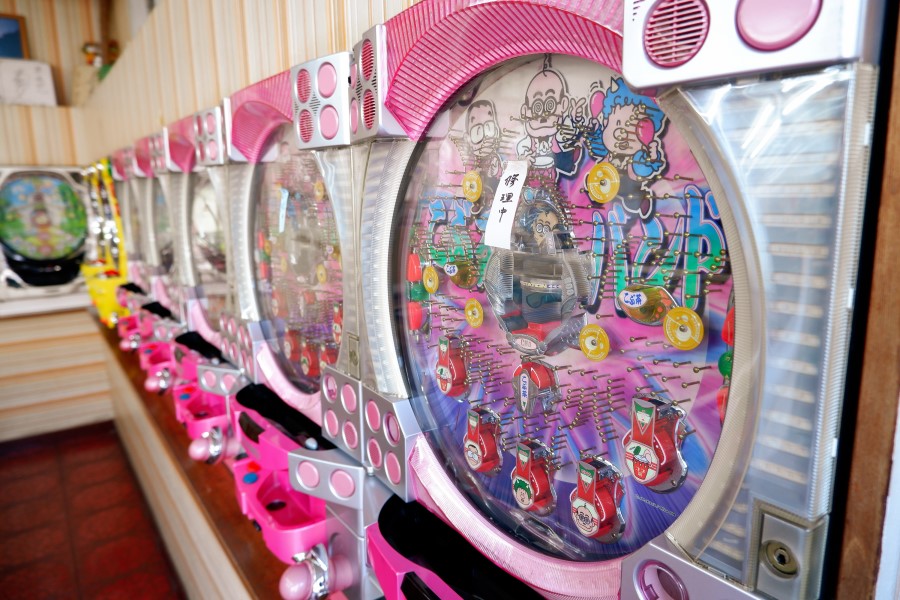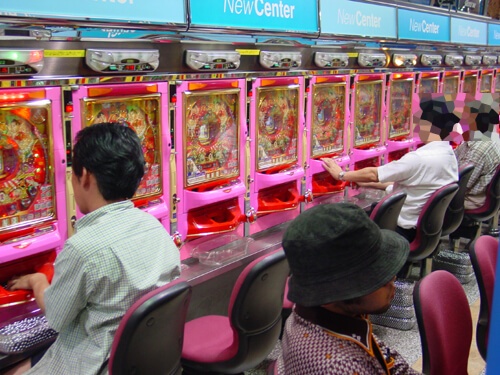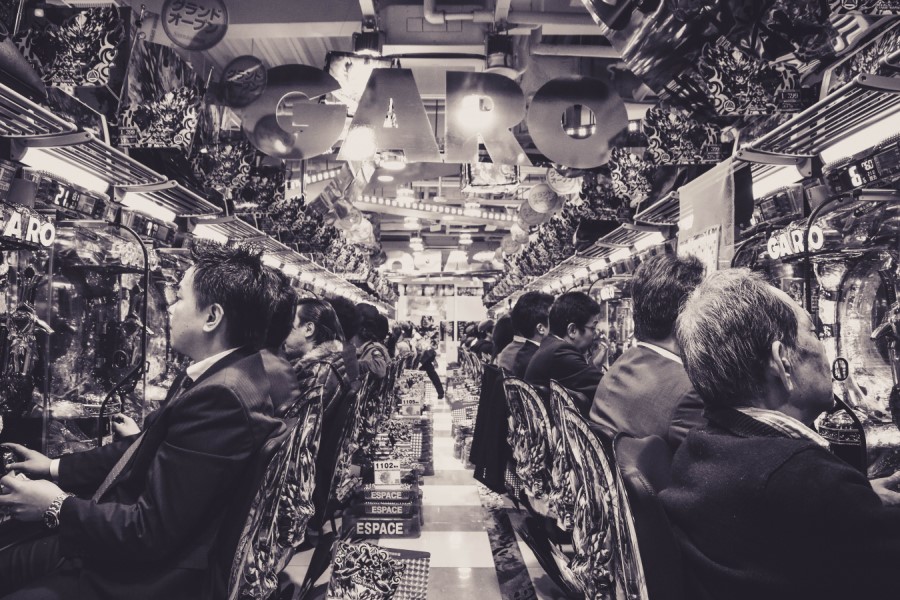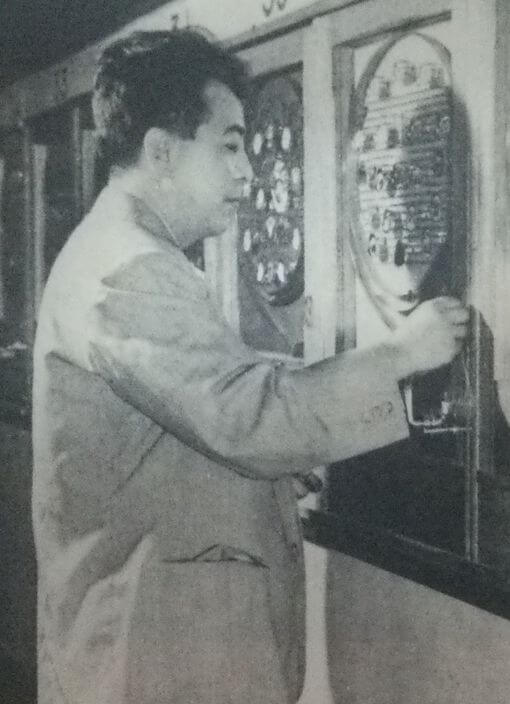Get Ready to Go on a Cultural Journey:
Join Our Newsletter and Discover Fascinating Destinations and Literary Adventures That Will Ignite Your Imagination!
Affiliate Disclosure: As an Amazon Associate, I earn from qualifying purchases. If you choose to purchase after clicking a link, I may receive a commission at no extra cost to you.
What is the Meaning of Pachinko in Min Jin Lee’s novel Pachinko?
In Min Jin Lee’s latest book, there is a very interesting metaphor being used in the title. Her book is called Pachinko and describes Korean immigrants experiences and lives in Japan. But wait, you say – what does Pachinko mean in English? What does Pachinko mean in Korean?
Well, Pachinko is not a Korean word. Pachinko is actually a Japanese word that refers to a machine that is like a Japanese slot machine but a little bit different. Read on for more detailed information.
What is the Meaning of the Word Pachinko in English?

Pachinko is a loan word from Japanese that does not have a direct translation into English. However, ithe word pachinko in English can roughly mean “the little sound of a ball bouncing off pins”.
Pachinko, derived from the Japanese word “pachin” (the sound of a ball bouncing off pins) and “ko” (meaning “little”), refers to a popular arcade game that combines elements of pinball and slot machines.
Pachinko involves launching small metal balls onto a vertical playing field filled with pins, bumpers, and pockets.
The objective is to guide the balls into specific pockets or winning areas to earn more balls or prizes.
The onomatopoeic nature of the word pachinko adds to its charm and uniqueness.
The History of Pachinko
Pachinko has a rich history that dates back to the early 20th century. It originated in Japan and has since become a significant part of Japanese culture. Let’s explore the evolution of pachinko over the years:
1. Origins in the 1920s
Pachinko’s roots can be traced back to the 1920s when it was first introduced as a children’s toy. It initially resembled a vertical pinball machine and was made entirely of wood. The early versions of pachinko lacked the complexity and features found in modern machines.
2. Transition to Gambling
In the post-World War II era, pachinko underwent a significant transformation. It evolved from a children’s toy into a gambling machine. This shift in purpose led to the rise of pachinko parlors throughout Japan, where people could gather and enjoy this exciting game while trying their luck.
3. Technological Advancements
As technology advanced, so did the pachinko machines. In the 1960s, electricity was introduced to power the machines, making them more engaging and entertaining. The addition of flashing lights, sound effects, and intricate mechanisms elevated the gaming experience and attracted a broader audience.
4. Popularity Boom
Pachinko experienced a surge in popularity during the 1970s and 1980s. The game became deeply ingrained in Japanese society, attracting players of all ages and backgrounds. Pachinko parlors multiplied, and the industry flourished, contributing significantly to the Japanese economy.
Mechanics of Pachinko

With a slot machine, you pull the handle and wait for the pictures to line up. If the pictures match, you can win big (especially the hard-to-get images).
But with a Pachinko machine, you pull back a spring-loaded handle and launch the ball (much smaller than Western pinball games) into a metal track.
The ball then flies to the top of the playing field and begins to fall.
The playing field is full of brass pins, several small cups (about the width of a small ball), and a hole at the bottom.
If the ball falls into one of the cups, the player gets a payout – a number of other small balls drop into the tray in the front of the machine.
If the ball falls into the hole at the bottom (which it will if it doesn’t fall into one of the cups), then that ball is gone.
The goal of the game is to collect as many balls as possible. These balls can be exchanged for non-cash prizes within the Pachinko parlour. Then these non-cash prizes can be exchanged for cash outside the premises of the Pachinko machine parlour.
Although gambling is illegal in Japan, exchanging for non-cash prizes within the premises and exchanging for cash outside keeps the game in a legal grey zone.
(Love Korean books? Check out The Kinship of Secrets of Eugenia Kim here)
How to Play Pachinko

Playing pachinko requires a basic understanding of the rules and mechanics. Here’s a step-by-step guide on how to play:
1. Obtain balls:
Before starting the game, players need to exchange their money for pachinko balls at the parlour’s counter.
2. Load the balls:
Once you have the balls, load them into the designated area of the pachinko machine.
3. Adjust the plunger:
Position the plunger to control the speed and trajectory of the balls. Pull it back to launch the balls onto the playing field.
As the balls descend, they will encounter pins and obstacles. The balls’ path can be influenced by the player, but there is an element of luck involved.
5. Aim for winning pockets:
The objective is to guide the balls into specific pockets or winning areas. These pockets trigger different outcomes, such as more balls, tokens, or prizes.
5. Collect winnings:
Once the game is over, players can exchange their winnings for prizes or tokens, which can be further exchanged for cash or other rewards.
(Want more book blogs to read? Check out our comprehensive best book blog list here!)
So, why does Min Jin Lee use Pachinko as the title for her book?

The meaning of the word Pachinko in English is essentially vertical slot machines where winning is unrelated to the player’s skill. Instead, after launching the ball, winning or losing depends entirely mostly on luck.
Min Jin Lee uses the word Pachinko as a metaphor for what happens to the Korean family in the story.
(Love Korean Books? Check out the Best Korean Crime and Mystery Thrillers here!)
Pachinko machines are a constant take on chance against overwhelming and unknown odds. So too for generations of the Korean family coming to terms with their exile in Japan, caught between the physical difficulty of exile and the internal feelings of loss.
In particular, throughout the novel Min Jin Lee shows how fate (or even patience) can snap, thus showing the bareness of its aftermath.
(Check out the hottest Korean fiction – The Incendiaries by R.O. Kwon here!)
Pachinko as a Metaphor:
In Pachinko, the game becomes a metaphor for life itself.
Just as players launch a small ball into the machine, hoping for it to land in a favorable spot and trigger a cascade of events, the characters in the novel navigate their own journeys through unpredictable circumstances.
The outcomes of both the game and the characters’ lives are influenced by a combination of skill, luck, and external forces beyond their control.
Thus the meaning of Pachinko is a Japanese pinball-like game that shows how luck and fate determine the characters’ lives.
Symbolism in Pachinko:
The title “Pachinko” serves as a symbolic representation of the characters’ struggles and aspirations.
The game’s mechanics reflect the recurring themes of chance, risk, and perseverance present throughout the book.
By using Pachinko as a symbol, Min Jin Lee establishes a thematic connection that underscores the characters’ relentless pursuit of success and stability amidst a turbulent world.
Pachinko’s Reflection of Society:
Through its exploration of the Korean diaspora in Japan, Pachinko offers a profound reflection of society and its treatment of marginalized communities.
The game of Pachinko, often associated with the Korean immigrant community in Japan, serves as a metaphorical backdrop for the characters’ experiences of discrimination, prejudice, and the complex dynamics between cultures.
The Role of Fate and Chance:
Fate and chance play a significant role in shaping the characters’ lives in Pachinko.
Sunja (the main character of the novel) has two sons, however, the fate of each son is piercingly divergent.
Noa buries himself deep into imagining himself as a Japanese, attempting to eliminate the feelings of loss.
On the other hand, Mozasu embraces what life he has by lowering his sights and trying to pull himself up.
The result of this is thick with compromise and tragedy.
As Mozasu’s wife says, “Pachinko was a foolish game, but life was not.”
Mozasu in turn replies, “Adapt. Wasn’t it as simple as that?”
Thus, the meaning of Pachinko is here in showing that Sunja’s sons’ lives are directed by fate. This is just like the chances of success in the game of Pachinko is mostly dictated by luck.
Frequently Asked Questions (FAQ)
Q: Why did Min Jin Lee choose the title Pachinko?
Min Jin Lee chose the title “Pachinko” as a metaphorical representation of the characters’ lives and the struggles they face. The game’s elements of chance, risk, and perseverance align with the overarching themes and narratives within the book, creating a resonant and evocative title that captures the essence of the story.
Q: How does the game Pachinko relate to the book?
The game of Pachinko serves as a metaphorical backdrop for the characters’ experiences in the book. It reflects the uncertainties, risks, and rewards they encounter throughout their lives. The game’s mechanics and the characters’ journeys mirror each other, highlighting the interplay between chance, fate, and personal agency.
Q: Is pachinko legal outside of Japan?
Pachinko is primarily popular in Japan and is legally operated in licensed pachinko parlors within the country. However, in some countries, pachinko may be considered gambling and subject to specific regulations.
Q: Are there any strategies to increase the chances of winning in pachinko?
While luck plays a significant role in pachinko, some players develop strategies to enhance their odds. These strategies include understanding the machine’s payout rate, observing patterns, and mastering the art of shooting the balls.
Q: How has pachinko influenced Japanese culture?
Pachinko has had a profound impact on Japanese culture. It has become a social activity that brings people together, transcending age and social barriers. Pachinko parlors are often vibrant and bustling places where players can socialize, relax, and enjoy themselves.
Q: Are there any similar games to pachinko in other countries?
Pachinko is unique to Japan; however, other countries have similar games that share some similarities with pachinko. For example, in South Korea, there is a game called “Kongkongi” that features a vertical playing field with pins and obstacles.
Final Thoughts on the Meaning of Pachinko in English
Pachinko is a captivating and culturally significant game in Japan.
Its unique name, derived from the distinctive sound of the metal balls bouncing off the pins, adds to its charm. With its intriguing gameplay, rich history, and influence on Japanese culture, pachinko continues to captivate players worldwide.
So, the next time you hear the word “pachinko,” you’ll know exactly what it means and why it holds such fascination.
I hope this clears things up in regard to what the meaning of Pachinko is in English, and how Min Jin Lee uses it as a metaphor in her latest novel Pachinko.
If you have any other questions, let me below in the comment section.
Peace!
A.J. McMahon
.
.
.
(P.S. Got any other books you want me to read or review? Then…)
Let’s Connect!
– Instagram: Flyintobooks
– Pinterest: FlyIntoBooks
– Facebook: FlyIntoBooks
– Twitter: @FlyIntoBooks
– GoodReads: A.J. McMahon
Affiliate Disclosure: As an Amazon Associate, I earn from qualifying purchases. If you choose to purchase after clicking a link, I may receive a commission at no extra cost to you.
Get Ready to Go on a Cultural Journey:
Join Our Newsletter and Discover Fascinating Destinations and Literary Adventures That Will Ignite Your Imagination!
















I came across one of these machines at a garage sale and bought it for a song. My wife and I had many a happy hour playing it, then we had kids and too few hours for much of anything else. Some where in our moves it disappeared. I hope someone else came across it and had as much fun as we did.
Who else thought that Pachinko was a Korean word due to the popularity of Min Jin Lee’s book Pachinko??